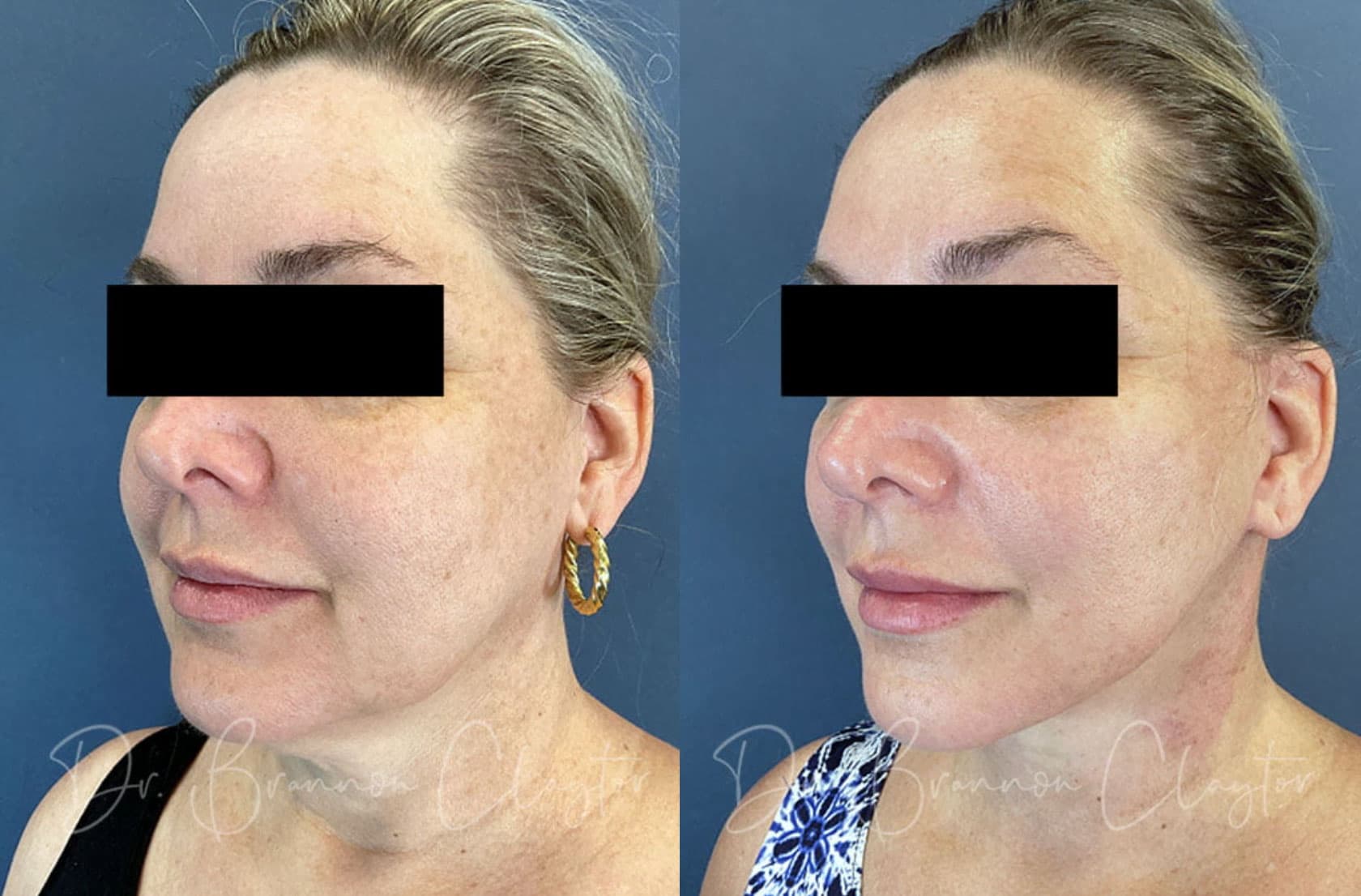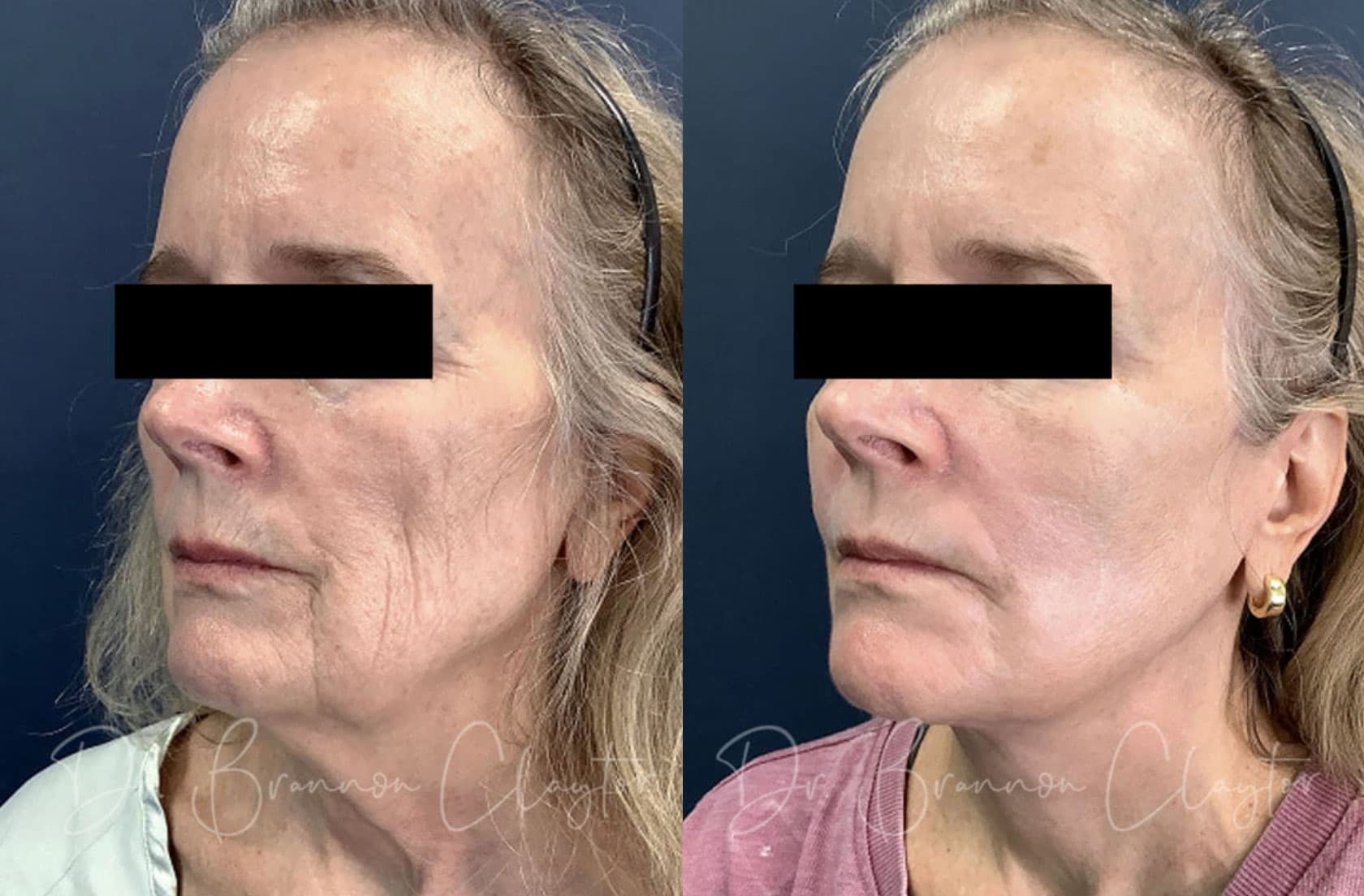SMAS vs. Deep Plane Facelift: Philadelphia Plastic Surgeon Explains the Difference (With Video!)

If you want to restore a youthful appearance in the face, a deep plane facelift generates a stunning improvement. The “after” photos reveal sweeping jawlines, youthfully high cheekbones—all completely natural-looking. But the first question that every Philadelphia patient asks is this: what’s the difference between a deep plane facelift and a SMAS (traditional) facelift?
Keep reading to learn what sets the deep plane technique apart, and watch the video below for Dr. Claytor’s demonstration with visuals!
Philadelphia plastic surgeon Dr. Brannon Claytor explains how the deep plane facelift technique differs from the more common SMAS plication facelift.
SMAS plication facelift
The most common type of surgical facelift, an SMAS plication facelift works on a shallower layer of tissues than the deep plane facelift. The SMAS is the superficial musculoaponeurotic system below the skin in your mid-to-lower face. “Plication” is the term for a surgical tightening of tissues, which usually involves lifting, removing excess, and rejoining remaining tissues. In a SMAS plication facelift, the SMAS layer is lifted vertically and re-anchored in front of the ears to create a lift of about 1 cm. Some surgeons may also lift from further down into the cheek, at the front of the earlobe, for expanded effects. Still, even an expanded SMAS facelift procedure cannot compare with the more comprehensive improvements offered by a deep plane facelift.
Deep plane facelift, step by step
A deep plane facelift leaves the SMAS intact, instead requiring your surgeon to access deeper attachments in the cheeks and lower face to raise and tighten tissues. Here are three major steps in the surgery:
1. Incisions are made within the hairline and in the natural folds of the ear.
A deep plane facelift is performed through discreet incisions placed in the sideburn area, within the folds of the ear, and along the hairline behind the ear at the back of the neck.
Not infrequently, Dr. Claytor will also create an incision within the hairline above the ears (just behind the temple); this allows him to lift the SMAS of the face at another important vertical axis, which may be more beneficial for certain patients.
2. The SMAS is separated, retaining ligaments are released, and the tissue is anchored higher for a defined cheek and firmer jowl area
SMAS is surgically separated from underlying tissues to allow Dr. Claytor to reach the retaining ligaments. These ligaments have a strong hold on the tissues of the cheek and lower face, keeping tissues in position. Thus, Dr. Claytor releases them in order to be able to lift the skin, fat, and SMAS higher on the facial bone structure. The skin is sutured gradually in the newly raised position, and anchored above the ear.
Ligament release is the primary step that makes the deep plane facelift so different from the SMAS technique: it allows for more impactful, dramatic results because the cheek’s youthful, high shape—a.k.a. the malar eminence—can be more fully restored, resulting in a stunning, youthful sweep in the mid-face.
3. Neck bands are released and anchored higher for a chiseled jawline.
In the neck, rather than SMAS, you have the platysmal muscles located below the ear, beneath the mandible, and toward the front of the neck. These muscles form the tight, vertical lines you see at the front of your neck when you clench your jaw (they don’t affect how you move your head).
To create a sweeping, more youthful jawline appearance, the platysma is released along the jawline, allowing Dr. Claytor to anchor these muscles behind the ear. This can create a chiseled mandible or jawline, as you can see in this before and after photo:

The importance of an experienced, expert deep plane facelift surgeon
A deep plane facelift works on the same layer of tissues where your facial nerves lie. Nerves spread from below and behind the ear, out into the cheeks, jawline, and below the eye area. The nerves that thread throughout the facial ligaments are released in a deep plane facelift, so it’s critically important that your surgeon is well-versed in this anatomy and in techniques for maintaining the integrity of facial nerves. Once a surgeon dissects below the SMAS layer of the face, they must identify and very delicately operate around the nerves.
Do not settle when it comes to choosing a board-certified plastic surgeon: avoid surgeons who offer below-average pricing, or who don’t have the before and afters, reviews, plastic surgery credentials, and reputation that prove they can safely achieve excellent facelift results. Dr. R. Brannon Claytor teaches his deep plane facelift technique at national meetings of plastic surgeons, and is widely considered to be a deep plane expert.

“The whole experience was fantastic! The results exceeded my expectations! I look and feel 10 years younger. Dr. Claytor and his staff made me feel so at ease and comforting. He is an excellent surgeon with a wonderful bedside manner and personality. It is one of the best decisions I ever made. I would highly recommend Dr. Claytor; in fact my neighbor has an appointment with him next month.”
Should I consider a deep plane facelift?
Patients who are good candidates for deep plane facelifts often come to us with loose skin that has succumbed to gravity, including forming jowls (loose skin around the jawline and chin) and sagging in the neck. As we age, we experience facial descent: our cheek structure (malar eminence is the technical term) involutes, and what we start to see is downward descent of our face—creating jowling, and excess neck skin and fat.
A good candidate for this procedure is looking to return to a more sculpted jawline and reduced wrinkles. Dr. Claytor’s goal is to help you look like the best version of yourself: We’re not here to make you look like someone else!
If you’re ready to experience these rejuvenating results yourself, we’d love to meet with you to discuss options! Dr. Claytor serves patients from all over the Bryn Mawr, Main Line, & Philadelphia areas. Call 610.527.4833 or contact our Philadelphia plastic surgery practice online to schedule your personal consultation with Dr. Claytor today.
